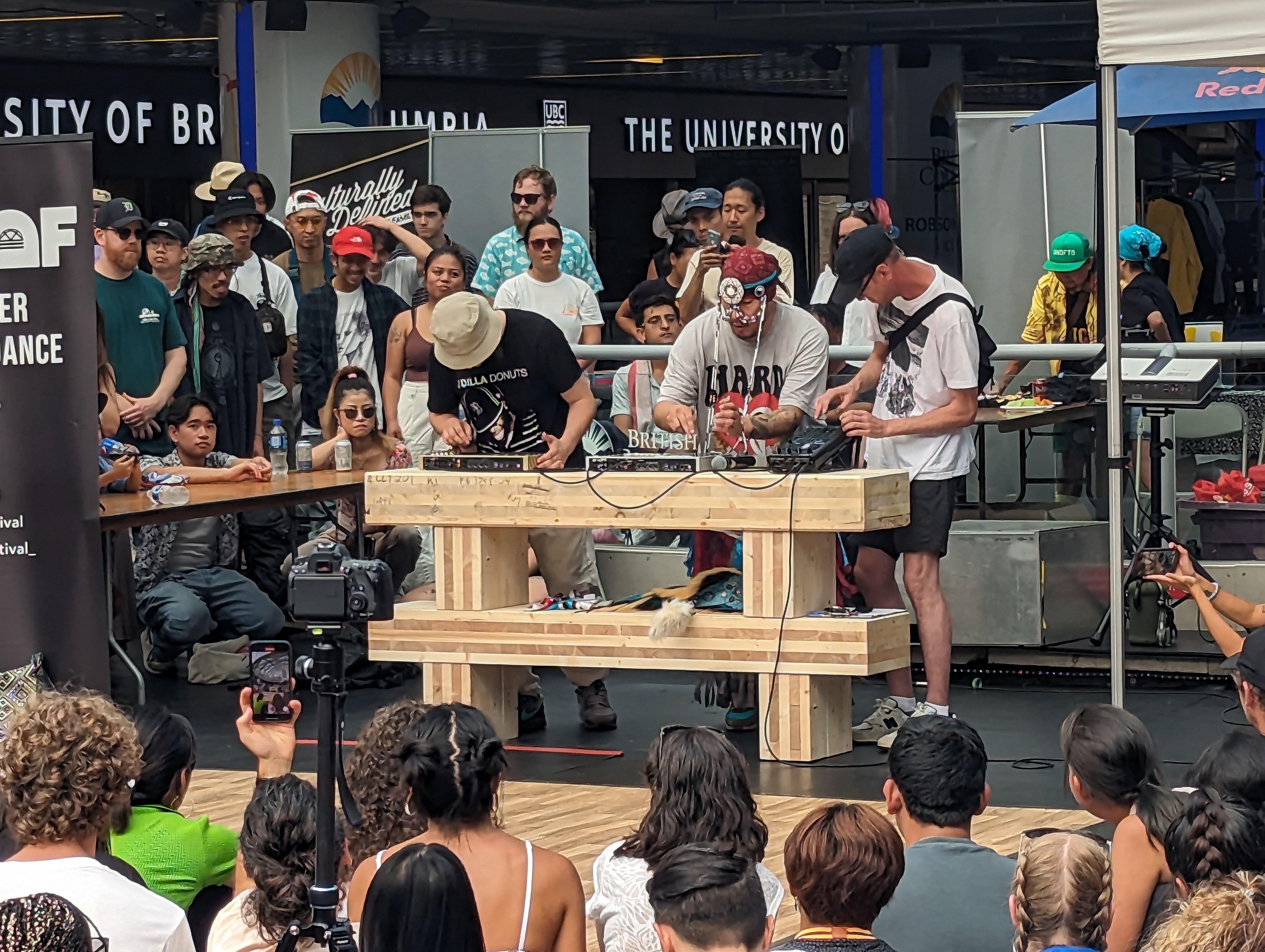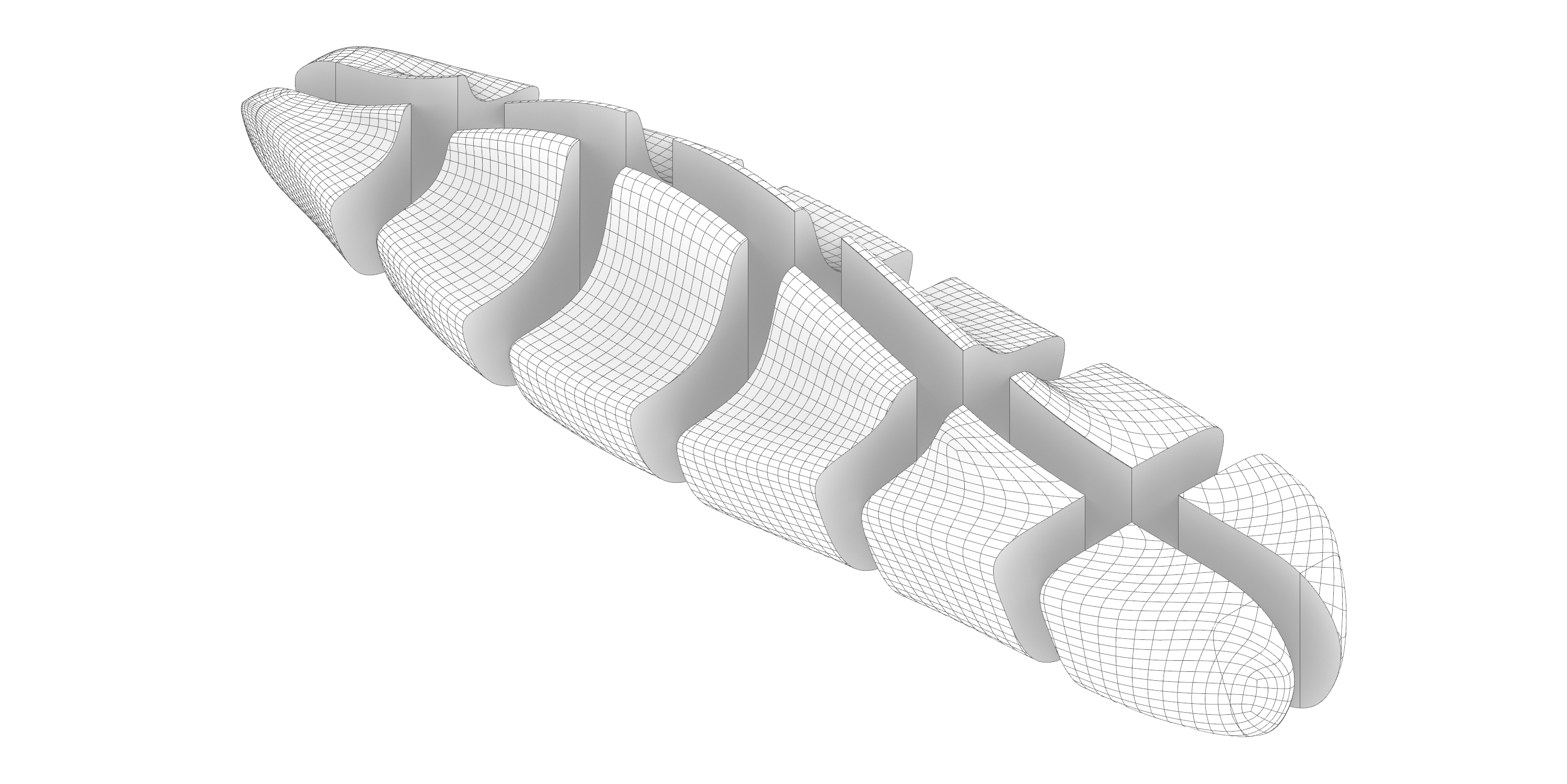Second Life For CLT
Type: Furniture + Robotics + Computational Design
Medium: Rhino + Grasshopper + Blender + Photoshop + Illustrator
Team: Edward Park (at DIALOG Design) and Concept Lab
Year: 2023-2024
Medium: Rhino + Grasshopper + Blender + Photoshop + Illustrator
Team: Edward Park (at DIALOG Design) and Concept Lab
Year: 2023-2024
Introduction
As a part of the ongoing research collaboration with Concept Lab and DIALOG to upcycle CLT, we are excited to give the material a second life through the development of computational workflows between design and robotic fabrication. Currently, sculptural furniture acts as an experimental medium with potential application for larger conversations in waste streams in the AEC industry. We hope it also provokes people to consider green construction and how we build our city. We are proposing using parametrically generated designs and robotic construction to feature the high-tech potential of the most advanced construction techniques and make those processes self-evident in the finished installation.
Background
Using sustainably sourced and locally grown timber makes CLT and other engineered wood products one of the most environmentally friendly ways to construct buildings and to create a future world with lower embodied carbon in construction. Fast+Epp are undertaking a government funded research program to test CLT building components in their laboratory. As a result of the testing program, a significant amount of CLT waste is produced. Large portions of the test specimens are functionally and aesthetically perfect, but there is no satisfactory method to currently dispose of or reuse the material. To minimize the waste from this process and demonstrate the application for larger manufacturing processes, creative reuse of materials is being developed to help create a more circular economy and sustainable future.
Early demonstrations, preceding the computation and robotics, include a local placemaking opportunity at the Vancouver Street Dance Festival 2023 (read about it here), a volunteer-led, non-profit public event. The fabrication of a variety of heavy timber benches from CLT offcuts were donated to the Vancouver Street Dance Festival, to create a spot for patrons and dancers to rest, and to provide feature seating for the judges and DJs. The arrangement of the seating/gathering encourage people to linger, interact with each other, and activate the urban space within our community. A majority of the benches were donated to the public after the event, while two came back to the DIALOG studio as part of their creative renovation refresh (read about it here).
Sibling Bench
The research continues as another design is currently being developed, with a desired outcome to be a set of ‘sibling benches’ that live in part at Concept Lab and part at DIALOG – a physical artifact that reflect the efforts of both parties involved in the work. Inspiration of the design come from the fluid geometries of heritage wood boats, as a vessel to propel the industry forward. The two sides come together to create a united object, while individual modules can be pulled out as single seats. The amorphous shape lends itself to potential alternate creative uses such as display pedestals, side tables, and more.
A single module of the larger bench was fabricated mid-April as a proof of concept (see images here). In this example, we mounted the chair at 45 degrees and carved 10mm steps with our ABB6-axis robot arm to create an interesting texture on the chair that keeps the milling touch of the robot arm visible. The success of this prototype is leading to many interesting ideas for furniture, stairs, sculptures, art, and other products that can be made from CLT cutoffs.
Further testing and production are required to realize the design. We continue to develop the computational tools while also exploring the limitations of the robot arm. This will be fundamental in setting the ground rules for future projects and processes.
As a part of the ongoing research collaboration with Concept Lab and DIALOG to upcycle CLT, we are excited to give the material a second life through the development of computational workflows between design and robotic fabrication. Currently, sculptural furniture acts as an experimental medium with potential application for larger conversations in waste streams in the AEC industry. We hope it also provokes people to consider green construction and how we build our city. We are proposing using parametrically generated designs and robotic construction to feature the high-tech potential of the most advanced construction techniques and make those processes self-evident in the finished installation.
Background
Using sustainably sourced and locally grown timber makes CLT and other engineered wood products one of the most environmentally friendly ways to construct buildings and to create a future world with lower embodied carbon in construction. Fast+Epp are undertaking a government funded research program to test CLT building components in their laboratory. As a result of the testing program, a significant amount of CLT waste is produced. Large portions of the test specimens are functionally and aesthetically perfect, but there is no satisfactory method to currently dispose of or reuse the material. To minimize the waste from this process and demonstrate the application for larger manufacturing processes, creative reuse of materials is being developed to help create a more circular economy and sustainable future.
Early demonstrations, preceding the computation and robotics, include a local placemaking opportunity at the Vancouver Street Dance Festival 2023 (read about it here), a volunteer-led, non-profit public event. The fabrication of a variety of heavy timber benches from CLT offcuts were donated to the Vancouver Street Dance Festival, to create a spot for patrons and dancers to rest, and to provide feature seating for the judges and DJs. The arrangement of the seating/gathering encourage people to linger, interact with each other, and activate the urban space within our community. A majority of the benches were donated to the public after the event, while two came back to the DIALOG studio as part of their creative renovation refresh (read about it here).
Sibling Bench
The research continues as another design is currently being developed, with a desired outcome to be a set of ‘sibling benches’ that live in part at Concept Lab and part at DIALOG – a physical artifact that reflect the efforts of both parties involved in the work. Inspiration of the design come from the fluid geometries of heritage wood boats, as a vessel to propel the industry forward. The two sides come together to create a united object, while individual modules can be pulled out as single seats. The amorphous shape lends itself to potential alternate creative uses such as display pedestals, side tables, and more.
A single module of the larger bench was fabricated mid-April as a proof of concept (see images here). In this example, we mounted the chair at 45 degrees and carved 10mm steps with our ABB6-axis robot arm to create an interesting texture on the chair that keeps the milling touch of the robot arm visible. The success of this prototype is leading to many interesting ideas for furniture, stairs, sculptures, art, and other products that can be made from CLT cutoffs.
Further testing and production are required to realize the design. We continue to develop the computational tools while also exploring the limitations of the robot arm. This will be fundamental in setting the ground rules for future projects and processes.







